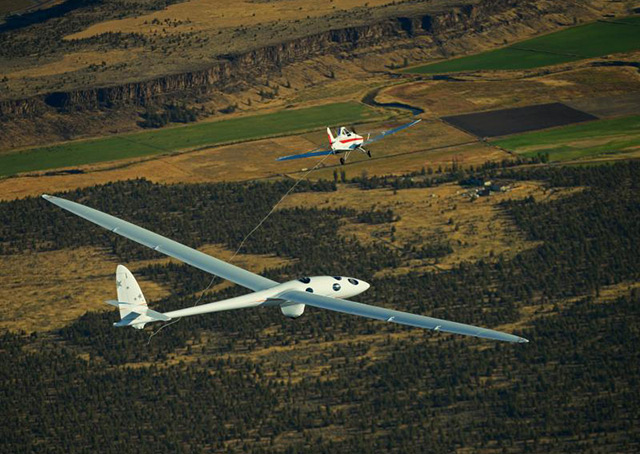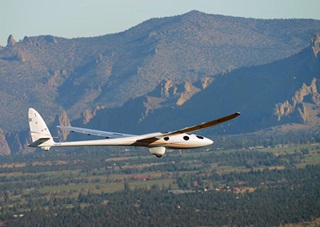
A pressurized glider designed to become the highest-flying winged aircraft ever has accomplished a successful first test flight from Roberts Field in Redmond, Oregon.
The 1,800-pound gross weight Airbus Perlan 2 glider, “the world’s first engineless aircraft designed to reach the edge of space,” was towed to an altitude of about 5,000 feet for testing on its maiden flight on the morning of Sept. 23, in what project managers deemed a historic moment for aviation.
Next July, the glider will attempt to set a new world altitude record for any airplane—thereby opening up “a world of new discoveries related to high-altitude flight, climate change and space exploration.”
“The knowledge gained from this project will impact how the world understands and addresses climate change. But it will also help Airbus continue to innovate ways to fly higher, faster and cleaner, on Earth and possibly beyond,” said Airbus Group CEO Tom Enders in a news release.
The test flight was piloted by Jim Payne and Morgan Sandercock. It was the first of a series of flights planned for the team “as it prepares to soar the aircraft to the edge of space in Argentina in 2016,” the project said.

The pressurized Perlan 2 has a wingspan of 84 feet and a wing area of 263 square feet. It was designed to ride air currents that in some mountainous regions near the poles may reach into the stratosphere. Altitudes expected to be reached in next year’s flights would exceed those reached by the U-2 and the SR-71 aircraft.
The aircraft was developed by The Perlan Project, a volunteer-run, nonprofit endeavor led by aerospace and engineering professionals and supported by Airbus Group, which became a partner in 2014, and other sponsors.
The aircraft was designed to operate at the edge of space where the air density is “less than two percent of what it is at sea level,” while carrying a crew of two and instruments that will “provide new insight into climate change and our upper atmosphere.”
One such component of the non-polluting aircraft’s mission will be taking “untainted air samples from the stratosphere to measure the levels of ozone-damaging chemicals and assess whether the ozone layer is replenishing or still depleting.”
The mission will offer insights into how aircraft might operate in the thin atmosphere of Mars and at temperatures as low as minus 70 degrees Celsius.
The glider’s true flight speed at 90,000 feet will be more than 400 mph, despite its lack of an engine.
“We’re extremely excited about the successful first flight of the Perlan 2 glider,” said Ed Warnock, CEO of the Perlan Project. “This marks a major breakthrough in aviation innovation, one that will allow winged exploration of the atmosphere at the edge of space and lead to new discoveries to unravel some of the continuing mysteries of weather, climate change and ozone depletion.”
In August 2006, the late Steve Fossett and Einar Enevoldson, Perlan’s founder, flew the Perlan 1 research glider to 50,772 feet, a glider record, at El Calafate, Argentina. The Perlan 1 aircraft is on display at the Seattle Museum of Flight.



